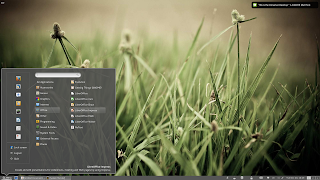The one that works best for you.
Plain and simple - case closed. You shouldn't be using the desktop that I tell you works best. You shouldn't be using the desktop that Linus Trovalds tells you works best. You know what works best for your needs - no one else does.
Want to know how many different Linux desktops I tried before I eventually settled on E17?
- KDE 3.5
- Gnome 2
- XFCE
- LXDE
- Openbox
- KDE 4.x
- Unity
If you are unsure about which desktop is best for you with all the recent changes that have come about in the Gnome/Ubuntu camps I encourage you to go grab some LiveCDs that feature the latest versions of the various desktops and give them a try. By that I mean a real try - don't just boot the system up, use it for 15 minutes and think you are an expert. Use the desktop for your everyday tasks for a few days, see if it feels right. Find out things you like/don't like and discover things that make each different desktop unique.
Everyone knows I love E17. I enjoy using it because it is fast, flexible, and --- when I want it to be --- flashy.
What is your desktop of choice on your FOSS operating system and why do you stick with it?
~Jeff Hoogland















































